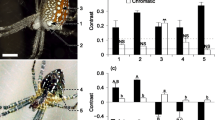Abstract.
Little is known about how a prey species' cognitive limitations might shape a predator's prey-capture strategy. A specific hypothesis is investigated: predators take advantage of times when the prey's attention is focussed on its own prey. Portia fimbriata, an araneophagic jumping spider (Salticidae) from Queensland, is shown in a series of 11 experiments to exploit opportunistically a situation in which a web-building spider on which it preys, Zosis genicularis (Uloboridae), is preoccupied with wrapping up its own prey. Experimental evidence supports three conclusions: (1) while relying on optical cues alone, P. fimbriata perceives when Z. genicularis is wrapping up prey; (2) when busy wrapping up prey, the responsiveness of Z. genicularis to cues from potential predators is diminished; and (3) P. fimbriata moves primarily during intervals when Z. genicularis is busy wrapping up prey. P. fimbriata's strategy is effective partly because the wrapping behaviour of Z. genicularis masks the web signals generated by the advancing P. fimbriata's footsteps and also because, while wrapping, Z. genicularis' attention is diverted away from predator-revealing cues.
Similar content being viewed by others
Author information
Authors and Affiliations
Additional information
Electronic Publication
Rights and permissions
About this article
Cite this article
Jackson, R.R., Pollard, S.D. & Cerveira, A.M. Opportunistic use of cognitive smokescreens by araneophagic jumping spiders. Anim Cogn 5, 147–157 (2002). https://doi.org/10.1007/s10071-002-0144-9
Received:
Revised:
Accepted:
Published:
Issue Date:
DOI: https://doi.org/10.1007/s10071-002-0144-9




